There’s something irresistible about a smoky, creamy bowl of dal makhani fry (dhaba style) served at a roadside dhaba. It’s warm, comforting, and packed with bold North Indian flavors that feel like a warm hug on a plate. Unlike the regular dal makhani, the dal makhani fry (dhaba style) is cooked with a richer tempering and often finished on a tandoor or coal stove for that signature earthy aroma. This blog post will walk you through everything you need to know to make this iconic dish right in your own kitchen.
Whether you’re a seasoned cook or a curious food lover, this guide will show you why dal makhani fry (dhaba style) is a must-try and how to get that true dal makhani fry (dhaba style) experience at home.
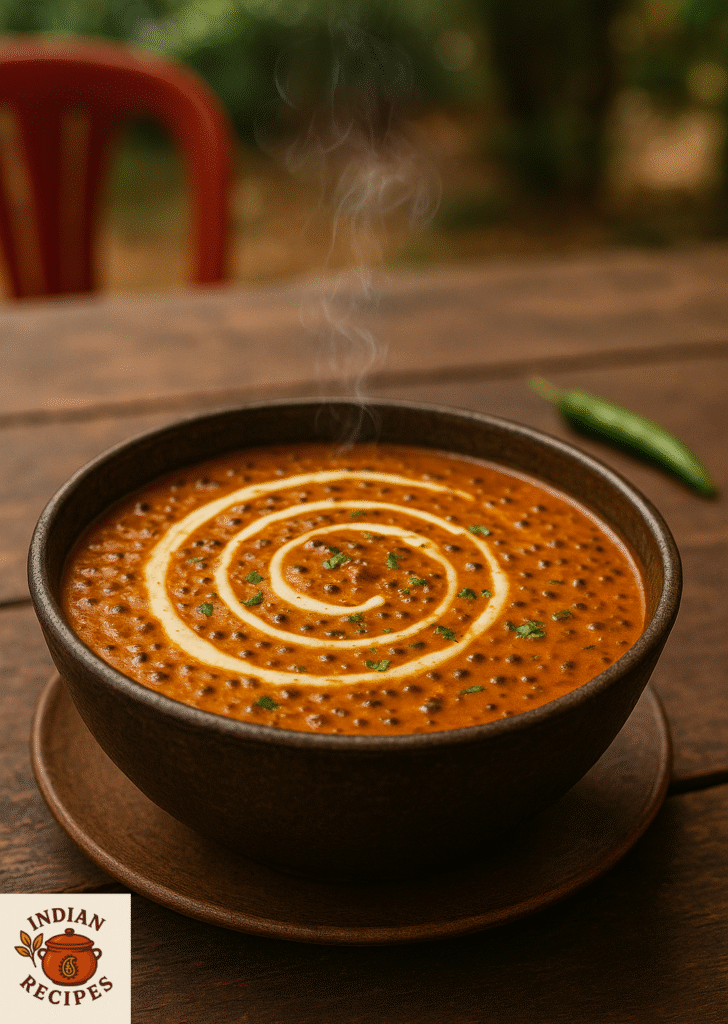
What Makes Dal Makhani Fry So Special?
dal makhani fry (dhaba style) is not just a variation of the classic dal makhani—it’s an experience in itself. What sets this version apart is its intense flavor depth and smoky texture. While traditional dal makhani is slow-cooked overnight and has a smooth, buttery consistency, dal makhani fry (dhaba style) takes it a step further by frying the dal in ghee along with a spiced tomato-onion base. The end result is creamier, spicier, and has a tantalizing roasted flavor.
At highway dhabas across North India, the dal is often slow-cooked on coal-fired stoves and then finished with a fresh tadka (tempering) right before serving. This final fry is what gives the dish its name dal makhani fry (dhaba style) and adds an explosion of flavor that’s hard to beat.
Ingredients You’ll Need
To create the perfect dal makhani fry (dhaba style), you’ll need a mix of pantry staples and a few indulgent ingredients. Here’s everything you’ll require:
For the Dal
-
1 cup whole urad dal (black gram)
-
¼ cup rajma (kidney beans)
-
4 cups water
-
Salt to taste
-
1 tsp turmeric powder
For the Fry (Tadka)
Step-by-Step: How to Cook Dal Makhani Fry (Dhaba Style)
- 3 tbsp ghee (clarified butter)
-
1 tbsp butter (optional but recommended)
-
1 large onion, finely chopped
-
2 tomatoes, pureed
-
1 tbsp ginger-garlic paste
-
2 green chilies, slit
-
1 tsp cumin seeds
-
½ tsp red chili powder
-
1 tsp coriander powder
-
½ tsp garam masala
-
¼ cup fresh cream
-
Kasuri methi (dried fenugreek leaves)
-
Fresh coriander for garnish
Optional: A piece of charcoal for smoking (for that dal makhani fry (dhaba style) essence)
These ingredients work together to create the rich, earthy, and bold profile that defines dal makhani fry (dhaba style) . While the butter and cream add richness, the tempered spices elevate the whole dish to dhaba-style perfection.
Ready to dive into cooking? Here’s the full breakdown of how to make authentic dal makhani fry at home:
Step 1: Soak and Pressure Cook the Lentils
- Wash and soak the urad dal and rajma overnight or for at least 8 hours.
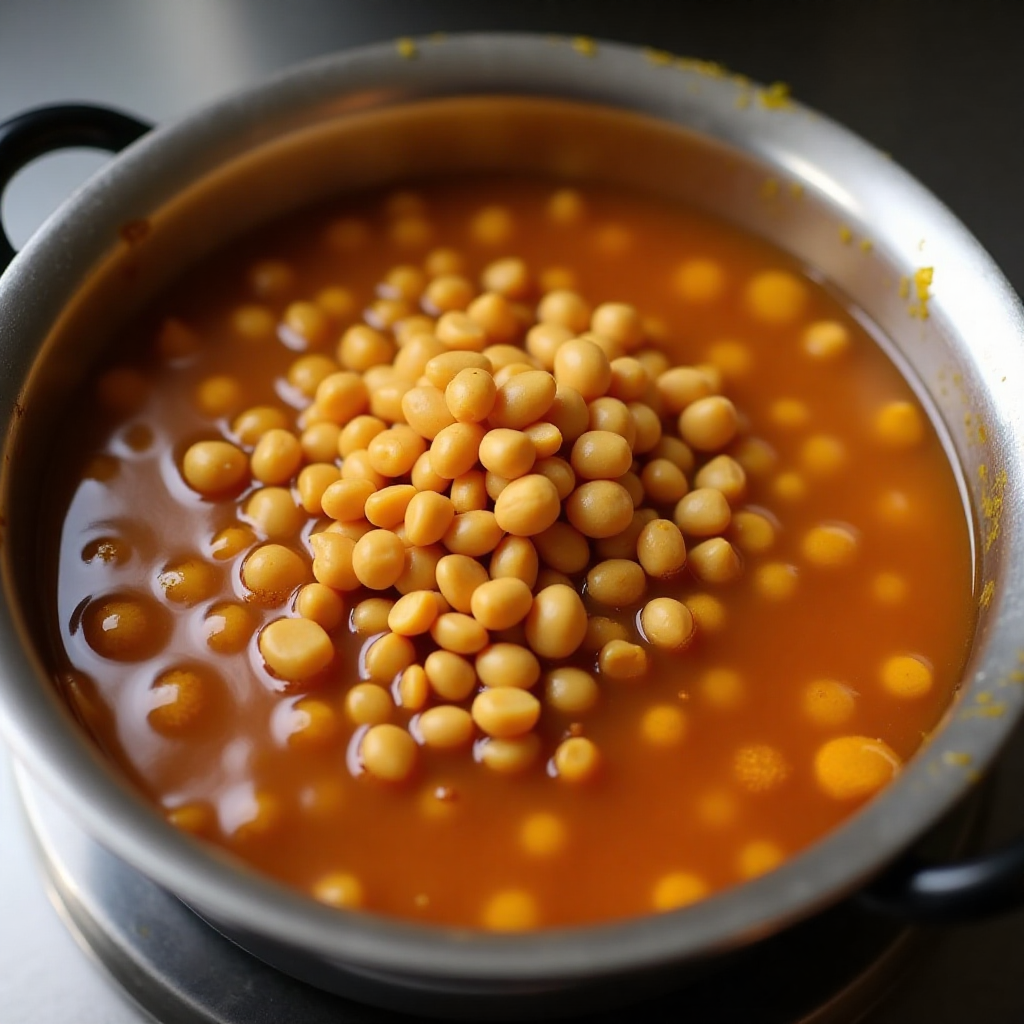
- Drain and rinse again before adding them to a pressure cooker with 4 cups of water, salt, and turmeric powder.

- Pressure cook for 5–6 whistles or until both dals are soft and mushy. Mash slightly with a ladle.
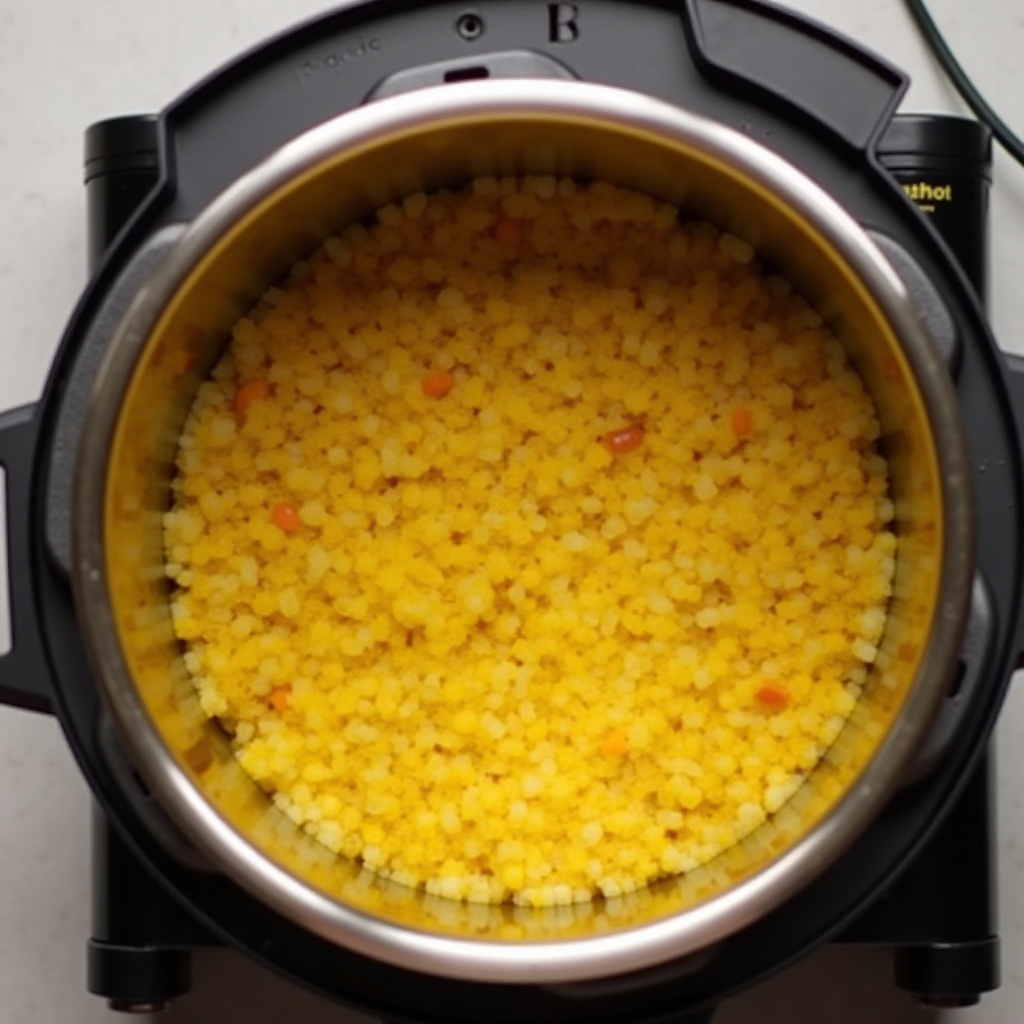
Step 2: Prepare the Fry (Tadka)
-
In a large kadai or wok, heat ghee and a bit of butter.
-
Add cumin seeds and let them splutter.
-
Add onions and sauté until golden brown.
-
Add ginger-garlic paste and cook until the raw smell disappears.
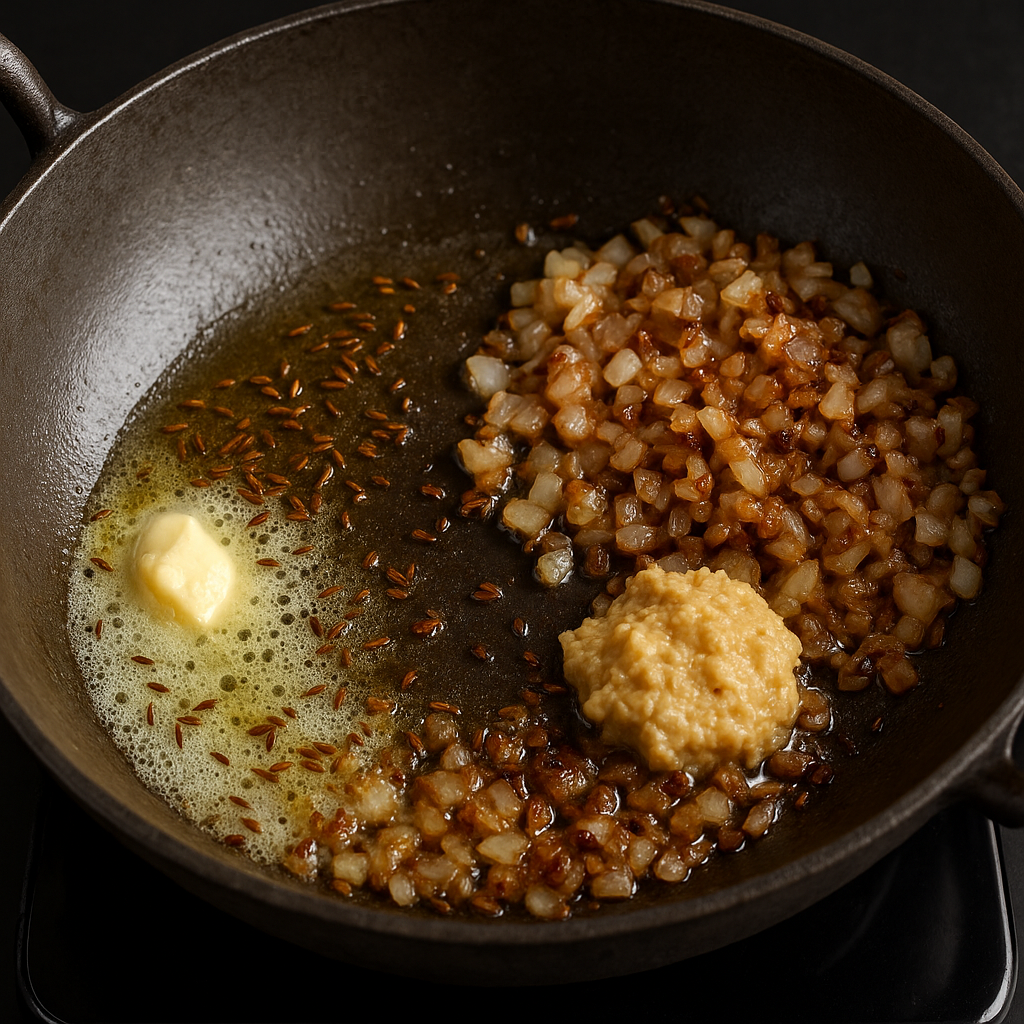
-
Toss in the tomato puree and cook until the ghee starts to separate from the mixture.
-
Mix in red chili powder, coriander powder, and salt.
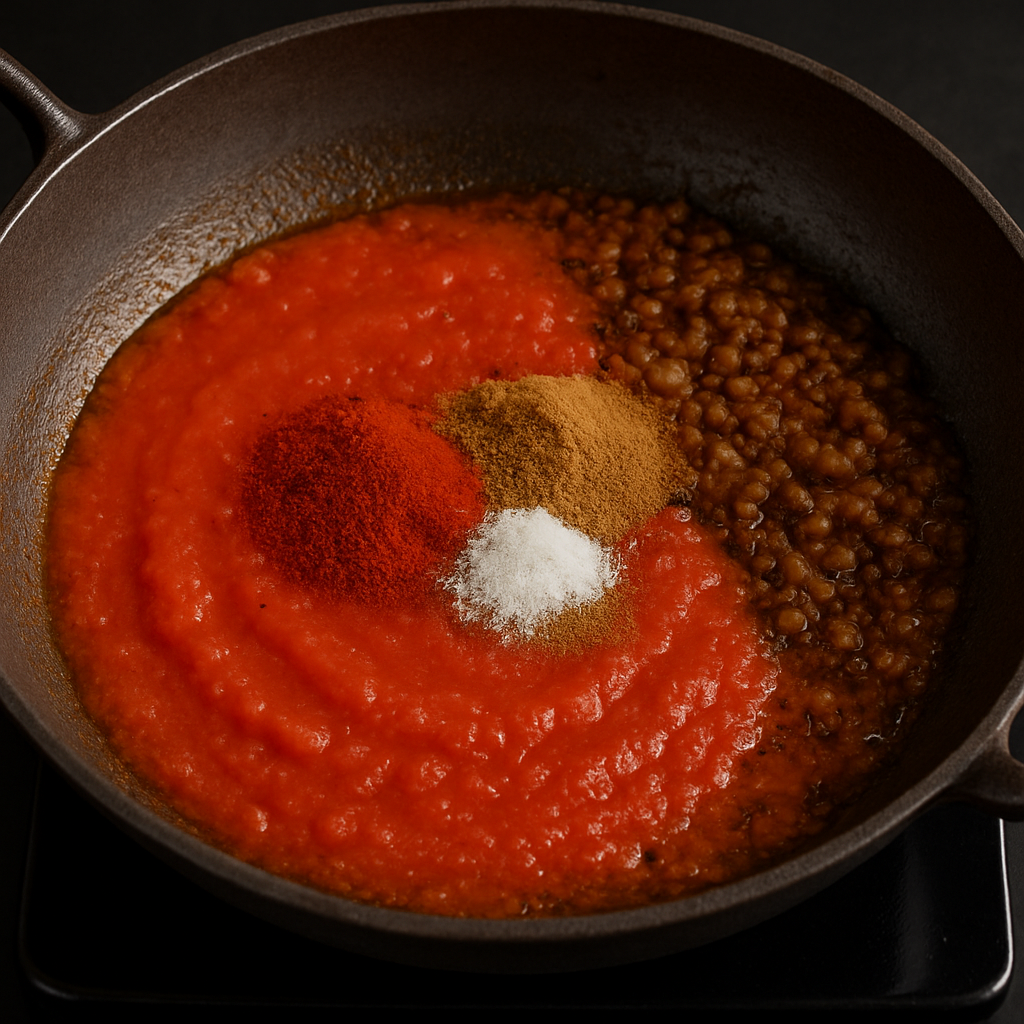
Step 3: Add Cooked Dal to the Tadka
- Pour the cooked dal into the frying mixture and mix well.
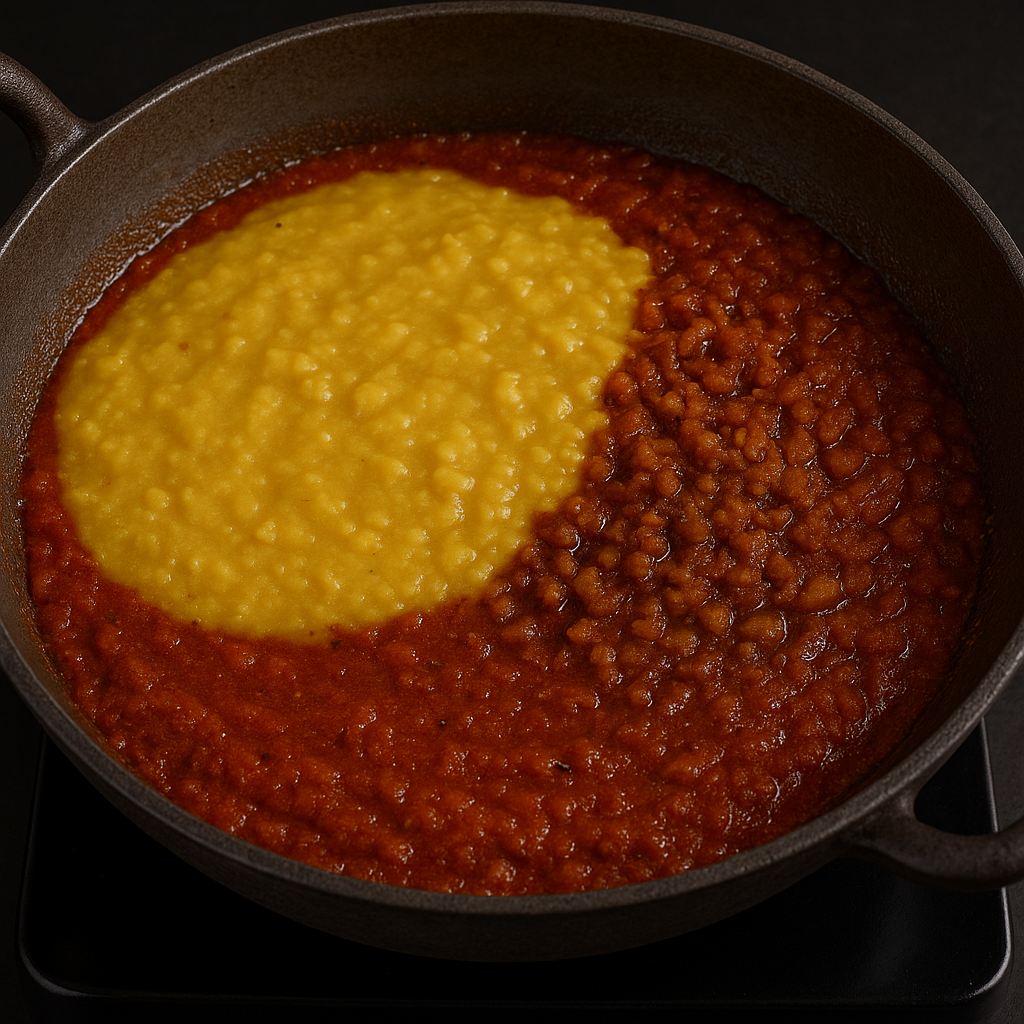
-
Simmer for at least 20–30 minutes on low heat, stirring occasionally.
-
Add cream, garam masala, and crushed kasuri methi.
-
Cook for another 5 minutes.
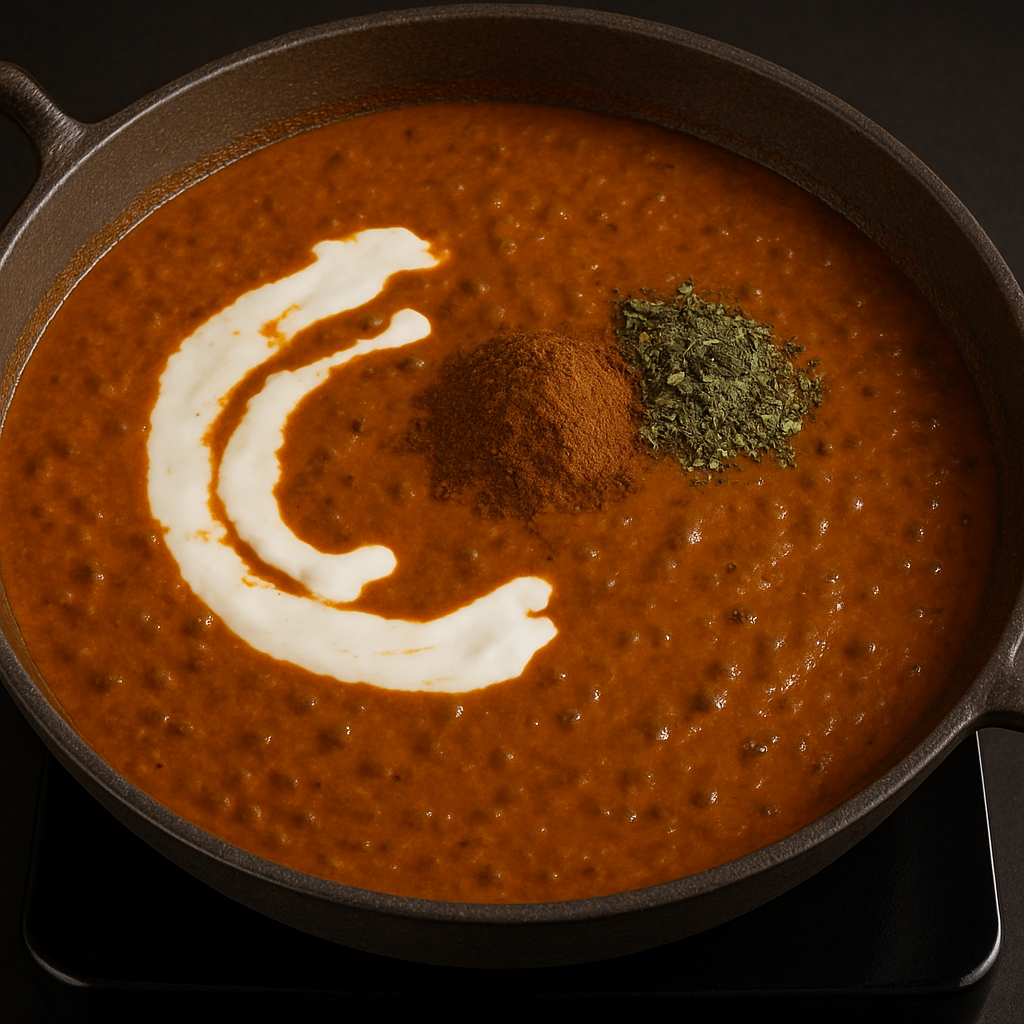
Step 4: Optional Smoky Dhaba Touch
-
Heat a piece of charcoal until red hot.
-
Place a small bowl or piece of foil in the middle of the dal.
-
Drop the charcoal into the bowl and pour a teaspoon of ghee over it.
-
Quickly cover the pan with a lid to trap the smoke.

- Let it sit for 2–3 minutes, then remove the charcoal.
- Your dal makhani fry (dhaba style) is now ready to serve!
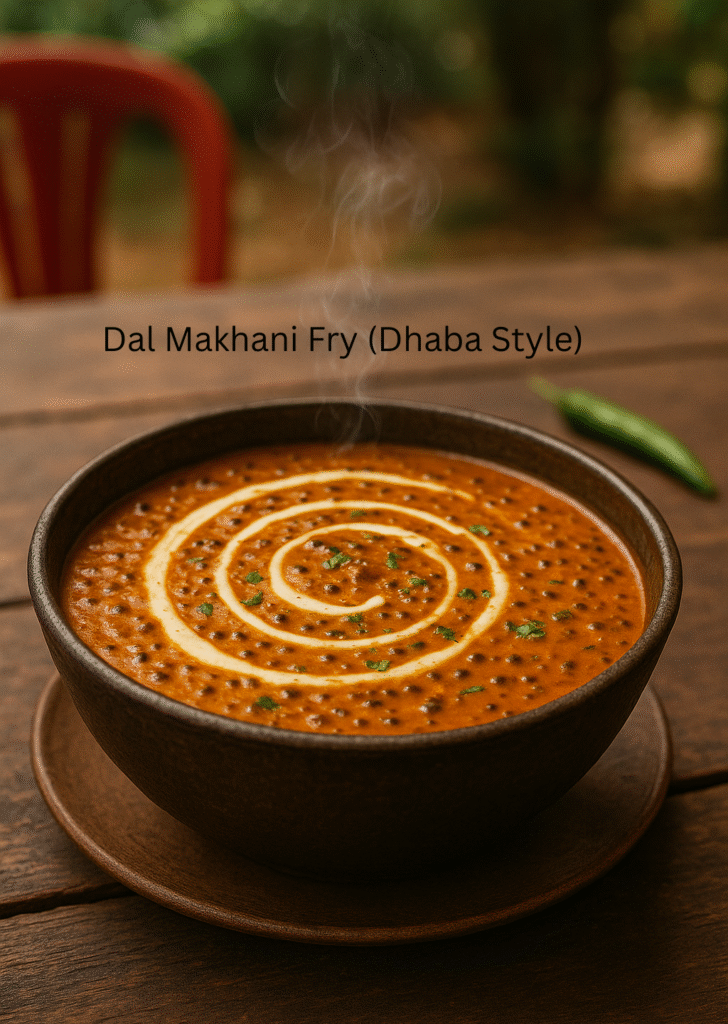
Tips for a Perfect Dal Makhani Fry (Dhaba Style) Every Time
Want to make your dal makhani fry absolutely flawless? Here are a few pro tips:
-
Use Whole Urad Dal: Avoid split dal—it doesn’t give the same texture. Whole black gram is essential for that creamy mouthfeel.
-
Slow Simmer: Even if you pressure cook the dal, slow-simmering it afterward gives the dish more depth.
-
Charcoal Smoking: This one step can transform your dal makhani fry into a true dhaba-style masterpiece.
-
Don’t Skip Ghee or Butter: These fats are not just for taste—they carry the flavor of the spices and give the dish its signature richness.
-
Make Ahead: Dal makhani fry tastes even better the next day after all the flavors have melded together.
-
Use Fresh Cream, Not Milk: For that indulgent texture, cream is essential. Milk or yogurt just won’t do the same job.
Remember, dal makhani fry is not about shortcuts—it’s about building flavors layer by layer.
Conclusion
Dal makhani fry (dhaba style) is the kind of dish that instantly brings comfort and nostalgia. With its deep, smoky aroma and buttery richness, it’s no wonder this dish holds a special place in Indian cuisine. Whether served with jeera rice, butter naan, or even plain roti, dal makhani fry (dhaba style) can turn an ordinary meal into something truly memorable.
Now that you know the secrets behind this beloved recipe, why not try it yourself? Once you master this dal makhani fry (dhaba style), you may never go back to the regular version again.
Happy cooking—and don’t forget to savor every bite of your homemade dhaba-style dal makhani fry!
Pingback: Pakhala Bhata - Indian Recipes